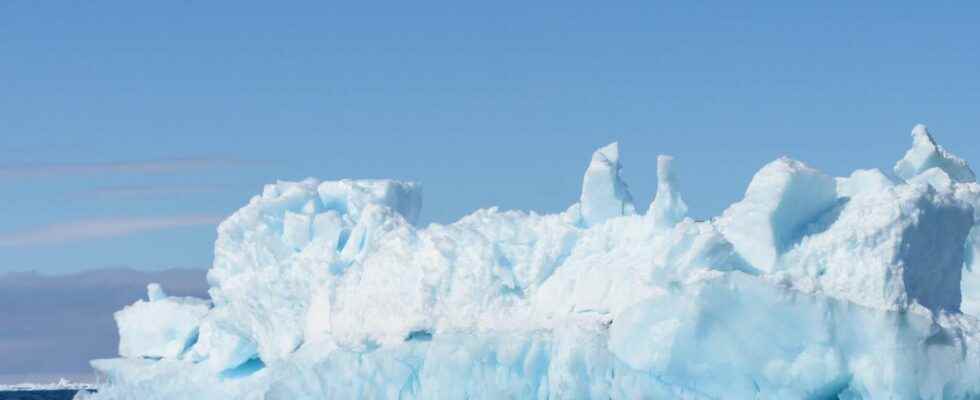You will also be interested
[EN VIDÉO] Antarctica: discover the deepest land surface on Earth Under its eternal ice, Antarctica hides a very rugged topology. The BedMachine project has revealed terrestrial canyons that go several kilometers deep. One of them, under the Denman Glacier, holds the record for the deepest point on earth. It descends more than 3.5 kilometers below sea level!
A ice barrier of 1,200 square kilometers collapsed on March 15 in Antarctic from the East, at the very beginning of a wave of heat exceptional on the continent.
Record heat recorded on the day of the collapse
Between March 15 and 20, Antarctica experienced temperatures 30 to 40°C higher than seasonal averages. In certain areas located in the mountains, absolute heat records have been recorded: on March 18, the Concordia station, located at an altitude of 3,234 meters, recorded -12.2°C, i.e. nearly 40°C at above seasonal averages. This is the highest temperature recorded there in any month. Some coastal areas experienced positive temperatures while at this time temperatures are expected to drop, as the South Pole enters the fall.
???? The recent extraordinary heatwave in Antarctica appears to have set a new World Record for the largest temperature excess above normal (+38.5 °C / +69.3 °F) ever measured at an established weather station. pic.twitter.com/1Z5AiG4DU5
— Dr. Robert Rohde (@RARohde) March 28, 2022
The collapse of the Conger Ice Shelf occurred on March 15, the 1er day of this warm period, but scientists observed the first signs of weakening between March 5 and March 7 thanks to satellite data. It is therefore likely that the unusual heat precipitated the collapse of the already weakened block of ice. Yes blocks of ice break off regularlyand naturally, in Antarctica, this one is considered one of the collapses most important for more than 20 years. The station weather report the closest to the collapse zone, Casey, is located 300 kilometers away and recorded a temperature of 5.6°C on March 15. This is a new record, beating the previous one of March 2021 (4.1°C).
East Antarctica seemed so far protected from global warming
More than the size of the block of ice that broke off, it is its location on the continent which is more worrying. The Conger Platform is located in East Antarctica, an area that glaciologists believed to be less affected by the climate change until recently. East Antarctica is indeed reputed to be much more stable than the west, an area in which collapses are common and the loss of ice has been accelerating for 50 years. The Conger platform began to shrink since the 1970s, and has shown more striking signs of disintegration in the past 10 years.
Will the collapse of such a gigantic block have consequences? No noticeable effect, yet, but the ice barriers help stabilize the ice cap. ” It is masses frozen water floats that prolong the glaciers sitting on the mainland. The disappearance of a platform does not directly raise the sea level since it is already floating on the ocean, but it does so secondarily by causing the acceleration of the flow of the glaciers upstream. The role of these foothills is therefore essential to stabilize the Antarctic ice cap, which rests on dry land”, precise Global Climate.
Note that the extent of ice in Antarctica during the month of February is the lowest on record, with 29.6% below average.
Interested in what you just read?
